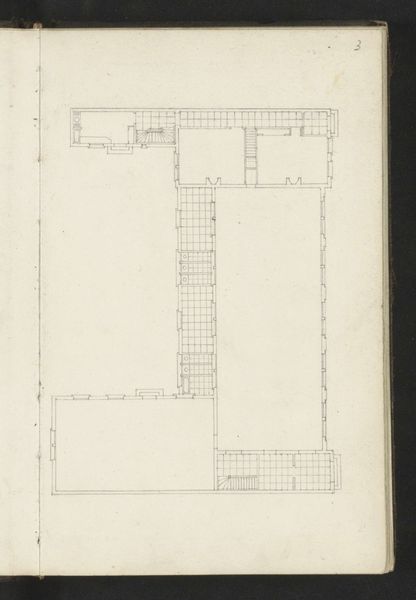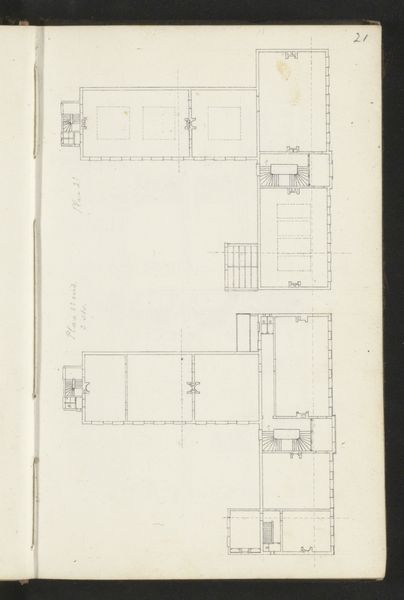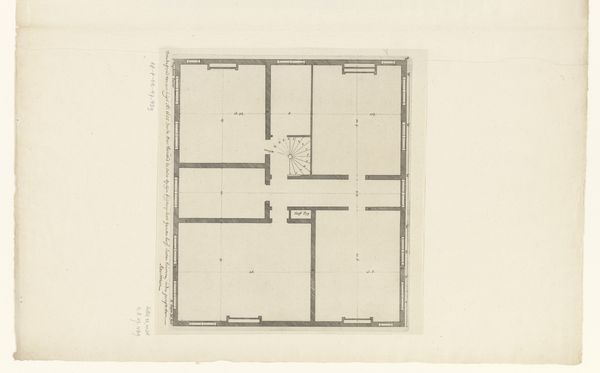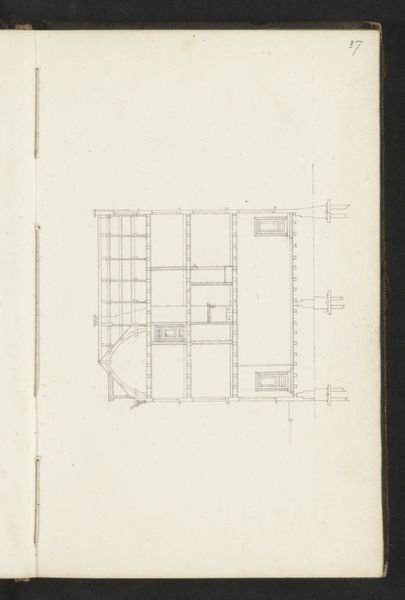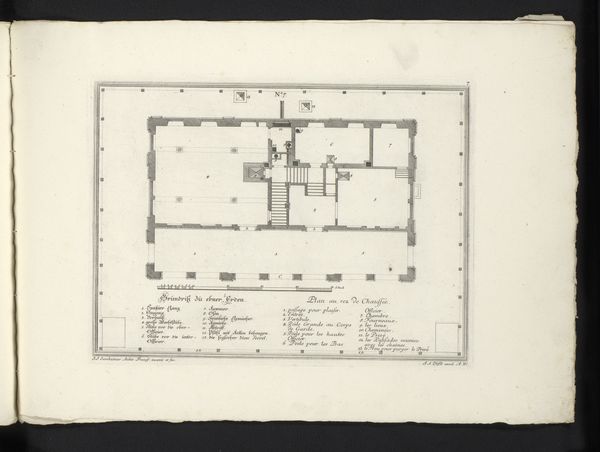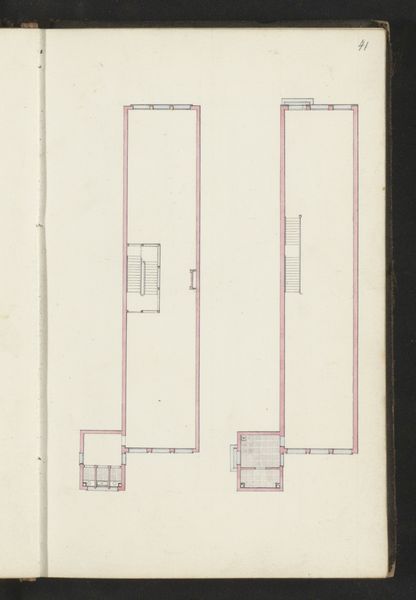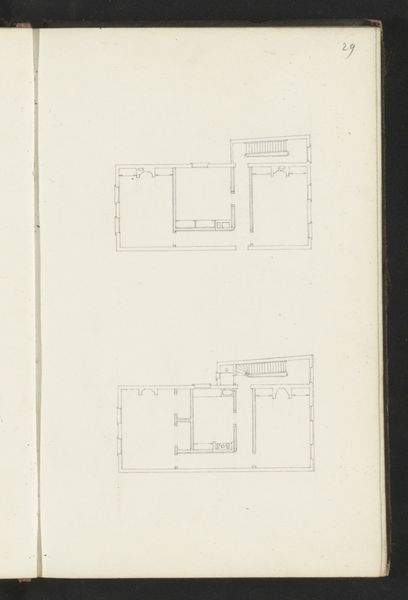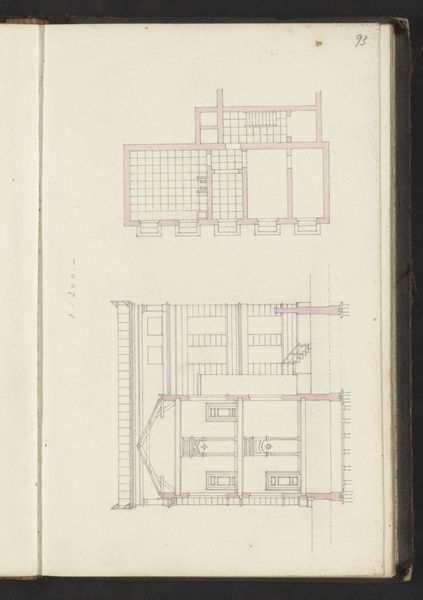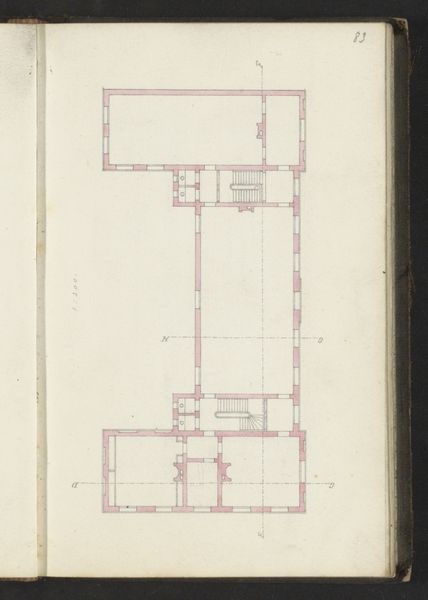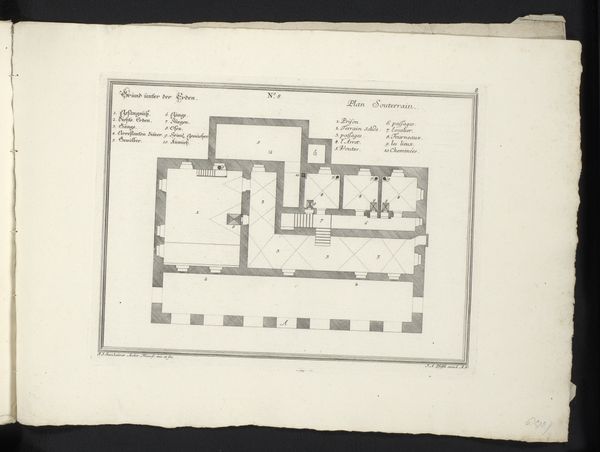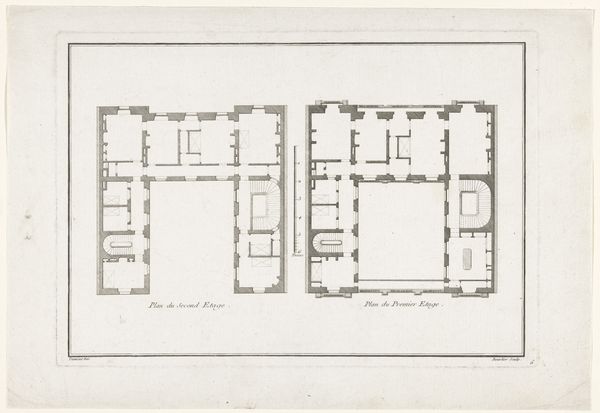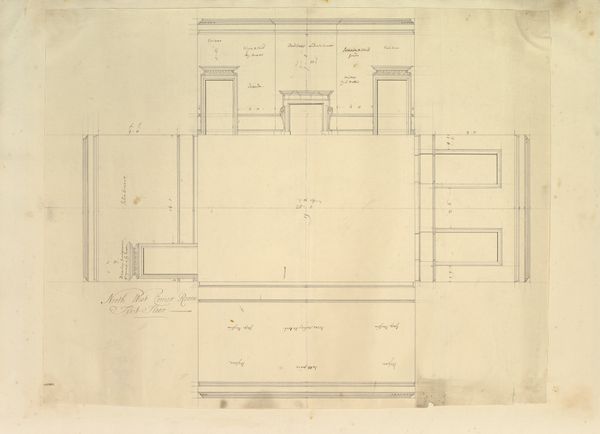
drawing, paper, pencil, architecture
#
drawing
#
aged paper
#
homemade paper
#
sketch book
#
incomplete sketchy
#
hand drawn type
#
paper
#
personal sketchbook
#
hand-drawn typeface
#
geometric
#
pencil
#
sketchbook drawing
#
sketchbook art
#
design on paper
#
architecture
Copyright: Rijks Museum: Open Domain
Curator: Ah, here's something intriguing. This is Willem Springer Jr.'s "Plattegrond van een verdieping," which translates to "Floor Plan of a Story," created around 1864. It’s pencil on paper. Editor: A floor plan, eh? Immediately it strikes me as ghostly, like peering into a forgotten life. It is so faint. It gives the impression of a palimpsest of lives lived, barely captured on aged paper. You can almost smell the beeswax and varnish. Curator: The materials tell a story, don't they? We’re looking at a page torn from a sketchbook, evident from the binding marks. The homemade paper suggests an artist focused on economy and direct production. It asks us to think about the daily practice of the draughtsman during the 19th century. Editor: It really invites a deeper look into the life within those walls. The hand-drawn type whispers secrets, but incomplete and sketchy! It almost suggests that even the architect never finished the story this building would tell! Look, it trails off. A bit haunting, I'd say. Curator: Precisely. The sketchiness also shows process. Springer was probably mapping the building from the material world onto paper, noting spatial arrangements, the placement of stairs, and possibly even windows based on shadow and light. This level of planning was essential to the development and control of built space, and architectural designs were often status symbols. Editor: A status symbol indeed—an architect's way of signing their name to the very shape of someone's life. I wonder if the incomplete nature indicates dissatisfaction or perhaps a moment interrupted by life? There’s real pathos here. Curator: That interpretation allows us to think about architectural drawing beyond its technical function. These sketches had economic value, as commissioned drafts, but it can be a mistake to downplay the importance of labor that produced such an object. In this sketch the marks and gestures reveal the process itself, offering clues to architectural development as well as social conditions of art. Editor: I'll definitely think about the sketchbooks differently now – both in terms of artistic development, but the social world in which the production took place. Curator: Me too! Thanks for your insights.
Comments
No comments
Be the first to comment and join the conversation on the ultimate creative platform.
